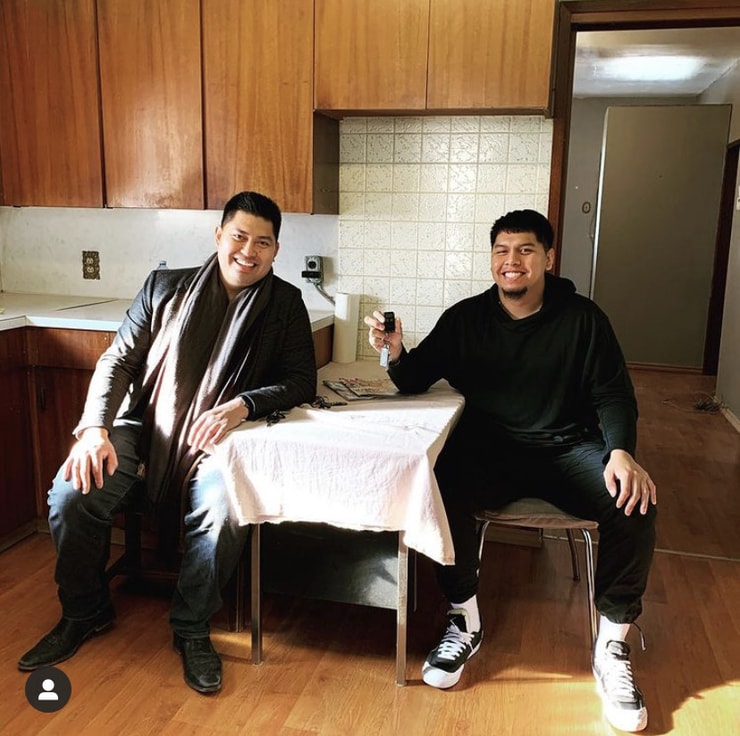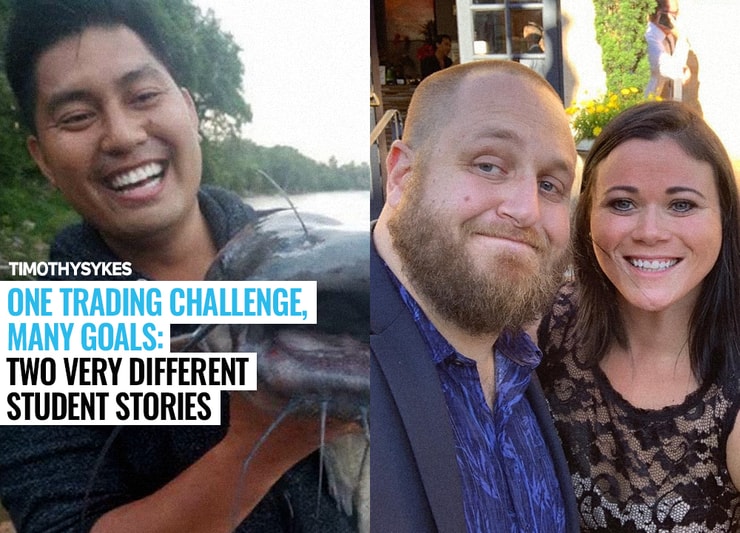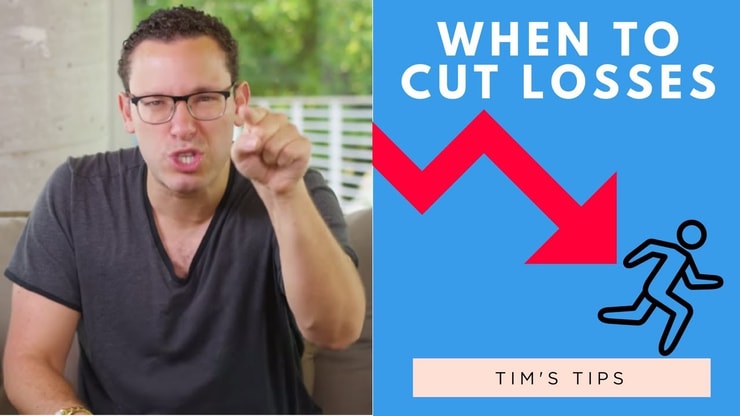Trading isn’t one size fits all. You have to find the patterns and strategies that fit YOU. I say it over and over: it’s NOT easy.
The two Trading Challenge students in this spotlight post — Sean and Chris — know that. And they took very different approaches. But I think they’re both on their way to becoming self-sufficient traders.
And guess what they have in common?
Both work their butts off. They’re not in trading for a quick score — they want trading to become a part of their lives.
That’s why I share student stories like these. I want to show you what hard work looks like from different angles. And how it can make a difference in people’s lives.
I don’t accept everyone to my Trading Challenge. I make sure my students are ready to work. And when I see them putting in the effort, I’m honored to share their stories.
So I want you to see how two very different traders are taking on the Challenge, how it’s working for them, and one thing they definitely have in common…
Table of Contents
Sean: From Elite Tennis Player to Aspiring Trader

I love Sean’s story. And it’s not just because he stuck with trading for three years before he became profitable.*
Turns out, Sean and I have more in common than just trading…
In my book, “An American Hedge Fund,” I tell the story of how an injury derailed my tennis career and led me to trading…
Sean was a competitive junior tennis player, too. He’s won national junior championships and represented Canada on the world stage. When he was 14 years old, he beat a future third-ranked player in the world!
Why do I like this so much aside from the tennis connection? Trading, like competitive sports, is a battlefield.
The discipline and mindset Sean learned playing tennis can help him in trading.
(*Please note that these kinds of trading results are not typical. Most traders lose money. It takes years of dedication, hard work, and discipline to learn how to trade. Individual results will vary. Trading is inherently risky. Before making any trades, remember to do your due diligence and never risk more than you can afford to lose.)
Sean’s Trading Story
Sean tells me he found me in late 2017 on social media. Before that, he’d traded … kind of. It was more of a hold-and-hope scenario.
In 2020, he tried to get serious about trading … But it didn’t work out. Sean says he became a bag holder on a position he says he was too stubborn to take a loss on. He blew up nearly all of his $19,000 account.
That’s a hard loss. But according to Sean, the worst part was that holding and hoping sapped his energy to keep learning.
He says, “I stopped studying and stopped watching the market. I lost over an entire year worth of market education and a crazy bull market waiting for a bounce that never came because I was too stubborn to take a loss.”
I’m happy to say that loss didn’t stop him. In January 2021, he funded a small account with $4,500.
Now he mostly goes long on OTC trades following my patterns and rules — like cutting losses. He’s learned how critical risk management is. As he puts it, “You are always just three weeks away from turning your trading around.”
When he came back to trading he became profitable after three weeks.* And now he thinks of trading like earning a university degree…
“The first few years you will pay market tuition by way of losses and blown up accounts,” he says. “Years three and four you can get a paid internship and make a little bit of money. After you graduate, you could possibly have a job that pays six to seven figures a year.”*
He’s already on track for that in the first few months of 2021. He’s up more than $155,000 on the year.*
How Sean Studies and Trades

Sean’s big ‘aha’ moment came when he was watching a video from Challenge moderator and millionaire student Matt Monaco.*
Matt keeps a trading journal — like all traders should. Collecting and reviewing your own data can help you figure out what patterns work for you.
Everything changed once Sean started tracking his data. He was surprised by what setups were actually working for him … and shocked to learn how much he was losing due to overtrading, random setups, and revenge trading.
It was a good learning experience for him. It gave him a way forward.
These days he mostly sticks to OTC plays — right now, morning panic dip buys are working best for him.
More Breaking News
- John Bean Technologies’ Stock on a Roll: What Recent Earnings Reveal
- Is Siyata Mobile’s Recent Dip an Opportunity or a Warning Sign?
- Archer Aviation Faces Downtrend: Opportunities or Warnings?
Sean’s Favorite Trading Challenge Resource
Sean says that DVDs like my “Pennystocking Framework” and my Challenge chat room have helped him learn his current go-to patterns.
I’m also humbled by his comments about my teaching…
Sean tells me, “I think you’re one of the best panic dip buyers in the world. You’re a wizard at that play. I used to have a lot of trouble with it. But seeing you do it countless times in the chat room inspired me to work on it and practice it. Now it’s one of my favorite chart patterns.”
Great work, Sean! I can’t wait to see what you do next. Now, here’s a trader with a completely different story and motivation…
Chris: Trading With a Full-Time Job

Many people start trading because they hate their full-time jobs and dream of a better life. Not Chris. He loves his job and says he’d keep doing it even if he was making a million dollars a year as a trader.
That said, Chris wants to provide the best future possible for his two young children. Here’s how trading is helping him work toward these long-term goals…
Chris’s Trading Story
Chris had seen me on the internet a few times over the years. But he never really took an interest until early this year. That’s when he learned a member of his community was making enough money to fully support a family through day trading.* His interest was piqued.
Chris opened his first brokerage account on January 18, 2021. As he puts it, “By February 11, I had lost almost everything in my account by having no strategy and trying to get in on stocks that had already taken off and reached their highs.”
Trading was exciting to him — losing money was not.
He says, “It quickly clicked with me how much garbage information there is out there. The more I thought about it, the more I realized if I was going to be profitable I was going to need help.”
He compares it to a chef trying to get a job in a fine dining restaurant. They need high-quality culinary training to break into that world. Chris knew that if he wanted to make it as a trader, he needed training.
He looked into my Trading Challenge and was impressed by my top students’ stories. He applied and officially started on February 12, 2021.
How’s it been going? According to Chris, “In just over a month have already profited enough to cover the cost of the Challenge and then some.”*
Wanna know something all of my top students have in common? Check out this video…
How Chris Studies and Trades
So many people complain about how hard it is to make time for studying.
Chris — who has a full-time job and a family — has a different mindset.
He says, “I am a big believer in replacing the phrase ‘I didn’t have the time’ with ‘it wasn’t a priority.’ If I want to be successful in trading I have to make the time.”
His commitments force him to be creative about his studying and trading. He uses his hour-long commute to listen to my content. He utilizes his lunch break and the time after his young children go to bed to study and do market research.
The Power of Thinking for Yourself
Chris understands that trading longevity isn’t about following alerts, but developing his own strategy. He says, “I am studying to develop one that works for me.”
Working around the pattern day trader (PDT) rule has forced him to put a lot of work into finding the most promising trades with the least risk and highest potential reward.
So far, he’s finding that gap-ups and swing trading have been working best for him. Since he’s not always able to watch the market during the workday, he sets up orders before 8 a.m. Eastern, then allows trades to execute while he works.
He says, “I go into each day with a trading strategy with clear entry and exit points. And as much as I am not a fan, I am always using stop-loss orders to make sure I accept my losses quickly and do not chase.”
I’m so glad Chris understands why cutting losses is my #1 rule…
Chris’s Favorite Trading Challenge Resources
Chris is a big fan of my DVDs — they may be long, but the education is mighty.
“PennyStocking,” “PennyStocking Part Deux,” and my top student Tim Grittani’s “Trading Tickers” are among his favorites.
He says watching my webinars as well as top traders’ webinars “has taught me how to identify various indicators and better utilize Level 2 data.”
Stalking Stocks: Playing a Stock’s ‘Personality’
Stalking people is bad. But stalking a stock can tell you a lot about its ‘personality.’ The more Chris gets to know oil and gas play 88 Energy Ltd. (OTCPK: EEENF), the better his trading results.
He’s traded EEENF multiple times. His largest trade to date was a swing trade that he entered on March 15, 2021.
He’d been watching the stock, so he knew how it traditionally responded to news catalysts. His stalking paid off for him. After he exited the trade on March 22, he reported a $5,991 profit.*
Chris’s Trading Goals

Chris doesn’t have aspirations of becoming a full-time trader. Trading represents an opportunity to become a better provider to his family and others.
He says his next goal is “to get to a place where I can invest more in philanthropic projects … I currently work with numerous non-profits and get a lot of enjoyment out of helping others. I would love to get to a point where my wife and I had our own charity where we are able to help at-risk youth and individuals experiencing homelessness.”
With my devotion to giving back to charity (check out the latest Karmagawa donations here), you know I’m loving these goals … Honestly, I’m overall loving Chris’s whole approach and trading mindset. I want more students like him!
One Trading Challenge … Many Approaches to the Market
There’s more than one way to find your way as a trader.
Despite their very different trading stories, both Sean and Chris have found strategies that are working for them. I’m proud that my Trading Challenge has helped them along on their respective journeys.
Did you catch what they have in common? They both understand trading requires education, time, and experience.
Both also have a great mindset and are dedicated to the process. I can’t wait to see what the future holds for them. Do you think trading could help you work toward your goals? Consider applying for my Trading Challenge.
Are you inspired by these student stories? Leave a comment … I love hearing your thoughts!









Leave a reply